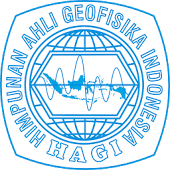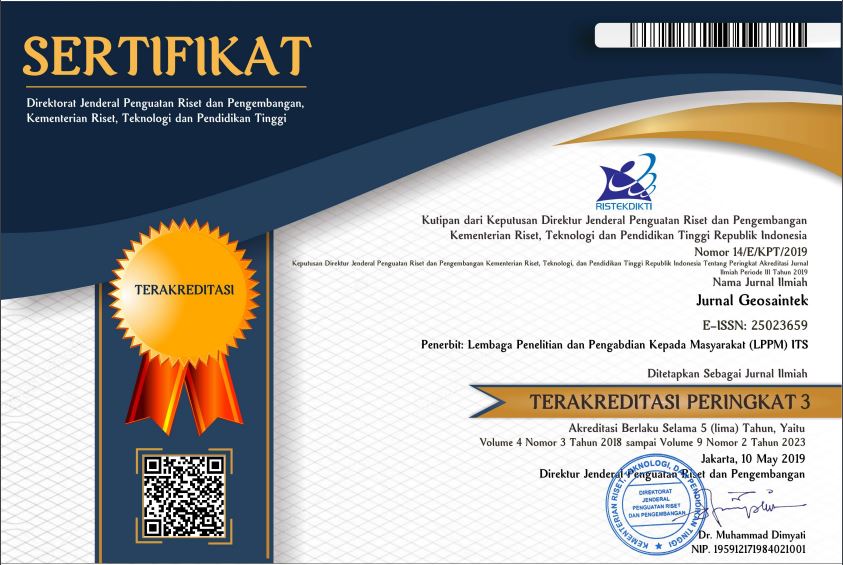INTEGRATED LAMINATED SHALY SAND ANALYSIS (LSSA) AND MONTE CARLO UNCERTAINTY PROBABILISTIC APPLIED FOR THE THIN LAMINATION RESERVOIR TOWARDS SIGNIFICANT NET PAY ADDITION
Abstract
In recent years, formation evaluation and well logging analysis have been evolving from its measurements, accuracy and applicability to determine tough downhole environments. Thin bed Reservoir is one of the most challenging well logging analysis due to the complexity of the high content of clay minerals in the shaly-sand lamination layer (thin bed) which inherently affects the log data response in the form of high gamma ray values and low resistivity. This causes the thin lamination zone is identified as a non-reservoir zone. Meanwhile, worldwide 30 to 40% of the oil in-place resources are confined within thin beds. Seeing the problem in the prediction of thin bed reservoirs, this research is focusing on Enhancing and developing thin bed potential by reevaluating petrophysical analysis, applying Laminated Shally Sand Analysis and Monte Carlo Uncertainty Probabilistic for calculating petrophysical parameter distribution and validating the parameter with Log Image. Laminated Shally Sand Analysis implements Thomas Steiber Plot in order to give laminated shale distribution and porosity, whereas the water saturation is calculated using Waxman Smith’s Equation. From this research, well SSK has thin bed potential at 2521.45 - 2543.45 ft. Laminated Shally Sand Analysis also capable to improve thickness of netpay with the range of 40.35% based on probabilistic delivered from Monte Carlo.
Keywords
Laminated Shally Sand Analysis; Monte Carlo Uncertainty; Thin Bed Reservoir
Full Text:
PDFReferences
Abdullatif, O. dan Abdulraheem, A. (2013), COMPARING HYDROCARBON VOLUME BETWEEN LSA (LAMINATED SAND ANALYSIS) AND STANDARD TECHNIQUES IN LOW RESISTIVITY SANDSTONE RESERVOIRS, masters, King Fahd University of Petroleum and Minerals. Diambil dari https://eprints.kfupm.edu.sa/id/eprint/138928/.
Anderson, B., Barber, T., Leveridge, R., Bastia, R., Saxena, K. dan Tyagi, A.K. (2008), Triaxial Induction — A New Angle for an Old Measurement,.
Asquith, G. dan Krygowski, D. (2004), Basic Well Log Analysis, Second Edition. Diambil 7 Mei 2020, dari https://www.aapg.org/publications/special-publications/books/details/articleid/4429/basic-well-log-analysis-second-edition.
Baillie, K.A. dan James-Romano, J. (2010), Identifying and Quantifying Thin Bedded Pay (TBP) (Part B): The Use of Dynamic Data to Evaluate Productivity Potential in Gas Reservoirs, Society of Petroleum Engineers, http://doi.org/10.2118/133535-MS.
Brandsen, H. (2016), Shale and Clay Part II. NTNU Lecture Notes: Petrophysics, Interpretation of Well Data, Advanced Course.
Fadjarijanto, A., Rachmadi, A., Setiawan, A.S., Praptono, A., Suriyo, K., Simatupang, M.H., Pakpahan, O., Costam, Y.R. dan Zakaria, Z.U. (2018), Three Petrophysics Techniques Applied for the Thin Lamination Reservoir: The Impact towards Significant Reserve Addition, Offshore Technology Conference, http://doi.org/10.4043/28412-MS.
Lalande, S. (2004), Accepted: 2004-09-30T01:41:22ZArtwork Medium: electronicInterview Medium: electronic, Characterization of Thin-Bedded Reservoir in the Gulf of Mexico: An Integrated Approach., Texas A&M University. Diambil dari https://oaktrust.library.tamu.edu/handle/1969.1/65.
Olsen, S.G. (2016), Improved Petrophysical Evaluation of a Thinly Bedded Oil and Gas Bearing Reservoir, Using Triaxial Resistivity and Nuclear Magnetic Resonance Well Logging Measurements, Diambil dari https://ntnuopen.ntnu.no/ntnu-xmlui/handle/11250/2410738.
Passey, Q.R., Guzmán-Garcia, A.G. dan K. E. Dahlberg (2006), Petrophysical Evaluation of Hydrocarbon Pore-Thickness in Thinly Bedded Clastic Reservoirs, hal. 133–153. http://doi.org/AAPG Archie Series, No. 1, Front Matter: About the Authors, Acknowledgments, Table of Contents, Preface, Editor's Preface, by Q. R. Passey, K. E. Dahlberg, K.
B. Sullivan, H. Yin, R. A. Brackett, Y. H. Xiao, and A. G. Guzmán-Garcia, Pages 133 - 153 from:AAPG Archie Series, No. 1: Petrophysical Evaluation of Hydrocarbon Pore-Thickness in Thinly Bedded Clastic Reservoirs, Edited by Ken DahlbergCopyright 2006 by The American Association of Petroleum Geologists. All rights reserved. 10.1306/1157796A13220.
Ruhovets, V. (1990), "A Log Analysis Technique For Evaluating Laminated Reservoirs In The Gulf Coast Area", The Log Analyst, Vol.31, No.05. Diambil dari https://www.onepetro.org/journal-paper/SPWLA-1990-v31n5a2.
Thomas, E.C. dan Stieber, S.J. (1975), The Distribution Of Shale In Sandstones And Its Effect Upon Porosity, Society of Petrophysicists and Well-Log Analysts, Diambil dari https://www.onepetro.org/conference-paper/SPWLA-1975-T.
Tyagi, A.K., Bastia, Dr.R. dan Das, Dr.M. (2008), Identification and Evaluation of the Thin Bedded Reservoir Potential in the East Coast Deep Water Basins of India, Diambil dari https://www.spgindia.org/2008/317.pdf.
DOI: http://dx.doi.org/10.12962%2Fj25023659.v6i1.6501
Refbacks
- There are currently no refbacks.

Jurnal Geosaintek diterbitkan oleh ITS bekerja sama dengan Himpunan Ahli Geofisika Indonesia (HAGI)
Disebarluaskan di bawah Lisensi Creative Commons Atribusi-BerbagiSerupa 4.0 Internasional.
Berdasarkan ciptaan pada https://iptek.its.ac.id/index.php/geosaintek/index.





